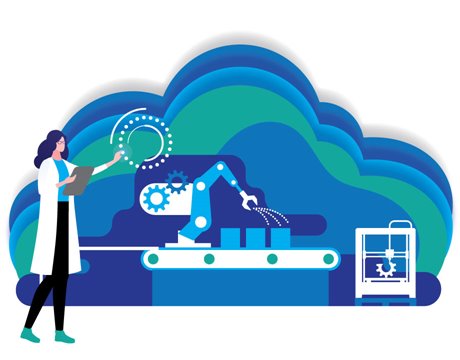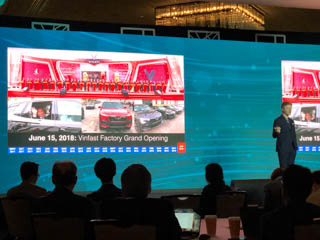Manufacturing Blog: Siemens Introduces its Digital Manufacturing Future with Xcelerator
Manufacturing Blog: Siemens Introduces its Digital Manufacturing Future with Xcelerator


The Internet of Things has brought us a digital landscape connecting engineers and manufacturers in new and unforeseen ways. For instance, at the Siemens media day in Brooklyn, N.Y., the company announced its new digital toolbox Xcelerator that combines the design, engineering, and manufacturing processes.
But as we head towards even more digital processes in engineering, the key question is the engineer’s role in this revolutionized manufacturing.
The Xcelerator platform’s goal is to assist engineers by easily connecting them to the digital design process through combined Siemens Digital Industries software products. These software offerings include: Cloud Solutions; Mentor, an electronic design software for automation; PLM suit for product lifecycle management; MindSphere, a solution for digital twin and data analysis; and Mendix, a software service that creates IoT data-driven applications.
The use of digital twins and simulation is a key driving point for Siemens. The company looks to transform the business model by creating digital equivalents of real-world processes. This, it claims, will enable continuous improvement and accelerate the manufacturing process.
Using the digital twin, for example, can considerably cut down the time it takes to build an assembly—it can be up and running in six weeks instead of six months. This technology helps engineers to avoid potential planning mistakes and to optimize their decision-making process.
Recommended for You: The Future of Electric Trucks Is Now
With all these digital innovations, where does it leave the engineers? Is digitization replacing them or enhancing their work?
One could argue that if digital twins are predicting the future, and if IoT applications can be created with just a few simple steps, then digital tools, machine learning, and artificial intelligence systems are indeed replacing engineers.
On the other hand, Siemens’ point of view is that the digital toolbox is just that—a new set of tools for engineers, to help augment their jobs rather than do it for them.
“When looking at a design problem, the machine learning program or digital twin can provide me an answer that looks absolutely ridiculous,” said Tony Hemmelgarn, CEO of Siemens Digital Industries Software. “The average person may not know that the software answer is wrong, but an engineer would know. You still need engineers to have the right skill set, and then they can leverage digital tools to help refine the process and make the right decision.”
Engineers should view the changing landscape of digital tools as a validated decision-making process. Digital twins are a mechanism to validate the process.
Further Reading: Better Engineering Can Tame the Electric Scooter
Siemens has shared a digital manufacturing success story of VinFast, the first luxury car maker to come out of Vietnam. The startup used virtual tools to simulate and build everything. Engineers designed the cars digitally, abandoning the traditional clay model design method used by many automotive manufacturers, while the engine technology was licensed from BMW to advance the process.
By teaming up with world-class suppliers and using advanced digital twins and simulation, VinFast went from nothing to delivering cars within two years.
As for the IoT, Siemens Mendix allows engineers to create low-code or no-code applications to fully capitalize on the collected IoT data. These apps are web-based and provide powerful data-driven widgets.
A user with any level of expertize can create these apps, from experienced software engineers to novice sales representatives looking to access inventory data. In addition, Mendix is now leveraging Siemens’ cloud functionality to pull data from different services.
It also automatically recognizes software used by the company and offers simple step-by-step process to create system-level data windows. These apps can help users gain information on any system.
Related Manufacturing Blog Post: Women Startup Challenge Explores Health Tech Innovations
“IoT as a feedback loop is an underestimated value of IoT right now,” Hemmelgarn said. “I don’t need IoT data to tell me a machine is overheating, but I do need a digital toolset to be able to take the collected data, feed it back into my digital twin, and start running simulations.”
“Having a digital model that is a complete representation of the real-world physical system is very helpful because it can tell me not just that my machine is overheating but also why.”
Carlos M. Gonzalez is special projects manager.






